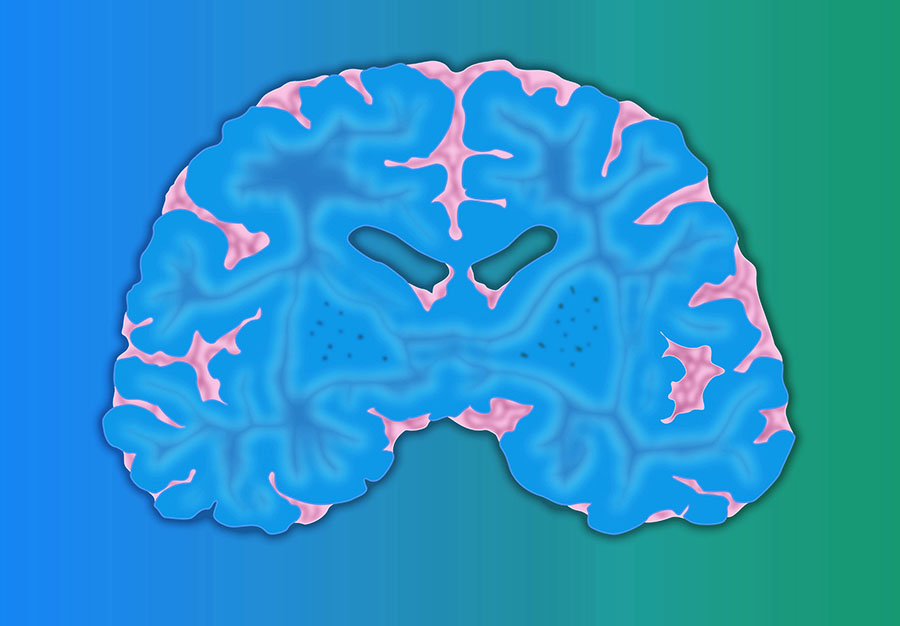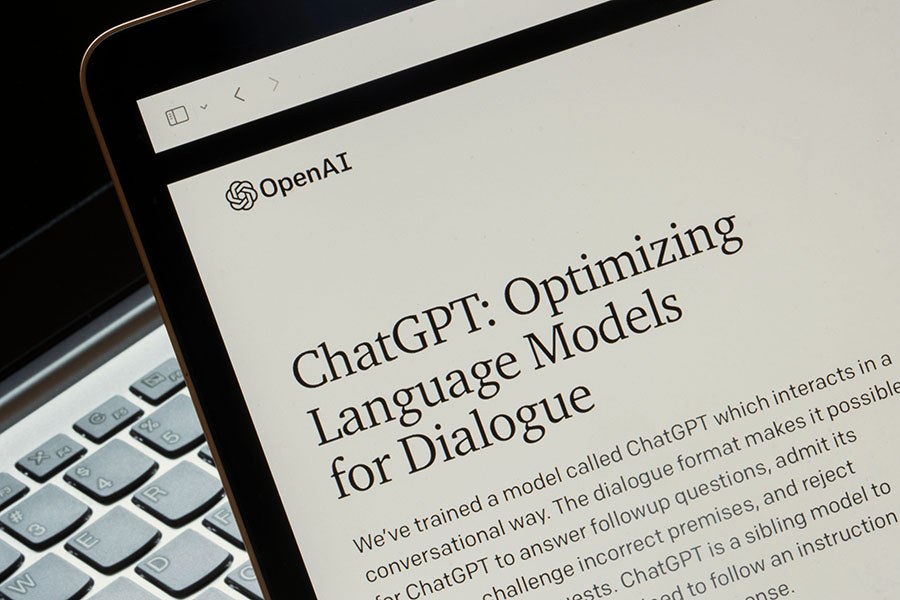What to expect in genetic engineering, neuroscience, psychedelics, longevity research, digital health, food, human performance, wellbeing, and of course, ChatGPT.
Early January each year brings us the Consumer Electronics Show in Las Vegas, followed by the J.P. Morgan Healthcare Conference in San Francisco, and a little bit later, the World Economic Forum in Davos—together quite the triumvirate of big-shot wingdings. So our favorite experts and pundits are primed right now to deliver their thoughts on what the year ahead has in store.
And while the economic and political headlines may be gloomy, our experts still have a lot of exciting developments and promising trends to point to, because science marches on. Read on for what they have to say about genetic engineering, neuroscience, psychedelics, longevity, digital health, the future of food, of human health, performance, and wellbeing, and of course, ChatGPT. There are so many great ideas here!
Neuroscience
We asked neuroscientist Murali Doraiswamy from Duke University’s School of Medicine, who is also a World Economic Forum advisor currently soaking up the doom and gloom in Davos, what he sees happening with our brains this year. Doraiswamy was both prolific and specific in his predictions, giving us lots of detailed thoughts, which we love, but which will perversely make it easier to judge him 12 months from now.
Eisai, a Japanese biotech, has recently received accelerated FDA approval for their new Alzheimer’s drug lecanemab (Leqembi), so he predicted that the Centers for Medicare & Medicaid Services (CMS) will agree to reimburse for the $26,500 a year drug in 2023. Last year the same federal agency basically withheld reimbursement from the more controversial, less effective Aduhelm, the last Alzheimer’s drug to receive accelerated FDA approval (Eisai partnered with Massachusetts-based Biogen on both drugs). Aduhelm is only covered for people with Medicare if they are enrolled in qualifying clinical trials. Doraiswamy’s first prediction is bold, given that CMS strongly implied it would do the same for other drugs in this class.
Leqembi has positive impacts on a subset of people suffering from Alzheimer’s, but can cause brain bleeds, especially in those carrying the APOE-4 gene. So Doraiswamy also boldly predicts there will be class action lawsuits this year over some of these side effect concerns with this whole class of antibody therapies.
After that dispiriting projection from Dr. Doom (he says, “I am very optimistic about the longer-term future—I am just pessimistic about the 1-year horizon”), I needed a boost of optimism. So I called Amy Kruse, a neuroscientist by training who oversaw a portfolio of pioneering work at the Defense Advanced Research Projects Agency (DARPA) as a program manager for performance-focused research. Her programs supported research on one of the most astonishing examples of neuroplasticity we know of. Using brainwave analysis, biofeedback, and tDCS (transcranial direct-current stimulation), soldiers were able to substantially reduce their training time and dramatically increase their proficiency at tasks like distinguishing between threats and non-threats and shooting sniper targets.
After more defense work and some private industry work developing cognitive assists for professionals, Amy is back to identifying and funding promising neurotech, and as of 2023 is now launching a new fund with Satori Capital called Satori Neuro. And she’s on fire.
Amy’s focus for the year—and probably the indefinite future—is what she calls precision neuroscience. She says we now have the capability to see with great accuracy what is happening in the brain, and we have increasingly accurate capabilities to diagnose. So the questions will soon become, how early can we spot the problem, when should we intervene, and with which tools? When it comes to neurodegenerative disorders like dementia and Parkinson’s, Kruse says, “If you know something ten years in advance, five years in advance, you can [potentially] intervene with a much lighter, less invasive kind of thing, with fewer side effects.”
The direction the field is going, according to Kruse, is to combine enhanced diagnostic capabilities with more targeted—and in many cases less invasive—treatments, ranging from psychedelics to electrical, magnetic, or ultrasound neurostimulation to deliver therapeutics to the nervous system.
Every brain is different, and with all these different treatment modalities, we can start looking at strategies that combine these tools in increasingly precise ways. When asked for examples, she says “for treatment resistant depression, we may say you need an ego death, or some kind of numinous experience to reset the system. And then maybe from there, you engage in some sort of maintenance therapy” which could be a different lower dose of psychedelic, or it could be a neurostimulation treatment. “Maybe for obsessive compulsive disorder… the tool kit you’re looking for may be something that quiets that network down. Maybe that’s neurostimulation. Or maybe there’s some other approach to perturb that network, get it out of its “entrenched-ness.”
“We’re just at the beginning of this,” she says.

Psychedelic medicines
Under the umbrella of precision neuroscience, another theme for Kruse is precision psychedelics. While 2022 continued to see progress in clinical trials for the traditional psychedelic molecules like psilocybin, LSD, and MDMA, she’s got her sights set on novel compounds inspired by the structures of the original molecules. “This is going to be a big year for readouts,” she says, “but I expect that the results are going to be complicated initially, without a clear ‘one-and-done’ kind of outcome for clinical trials of these novel psychedelic compounds.”
Doraiswamy weighed in on psychedelics as well, predicting that in 2023, as more psychedelic studies announce positive results and enthusiasm rises further into bubble status, risks could get ignored. His primary concerns with psychedelics are the risk of psychosis, suicidal ideation, and relapses, which he says should be enough to encourage a major rethink of how quickly these therapies get rolled out to treat mental illness without medical supervision.
But he also likens the adoption of psychedelic therapy to the U.S. drug development cycle, which he says “always follows the 5/10/15 rule. For the first 5 years, companies hype new drugs; next 5 years all hidden side effects are exposed, leading to black-box warnings and class action lawsuits; in [the] last 5 years, the companies start dissing their own old drug as the patent runs out to begin the hype cycle for their next new drug.” 2023, Murali predicts, will be the start of those middle 5 years, when the negative side effects and risks will start to get attention.
Jack Kreindler, a British physician, digital health entrepreneur, and human performance researcher at Imperial College, was on a research expedition to the South Pole (more on that below) when he sent me his predictions about psychedelics and other topics. Texting via Bluetooth to a satellite phone to a US phone and then to mine, he predicted that “My mum will start asking me why doctors are not yet prescribing [psilocybin] mushrooms for mental illness.” Adding to his prediction, he thinks that a path to regulated clinical use will be established in many countries.

Psychedelic medicine is also likely to be a big driver of future policy, according to Jeanne Fontana, a physician, activist, and advocate. Her pioneering work on the 2004 $3 billion California Institute for Regenerative Medicine helped jump-start stem cell research in the state, creating an agency that distributed 90 percent of that allocation to fund research, build labs, finance more than 60 clinical trials, and stimulate the creation of more than 56,000 jobs. It also added $10.7 billion to the U.S. economy. Fontana’s new passion is to address the mental health crisis by getting a new initiative on the California ballot in 2024 to repeat that play, only this time to boost research and development of psychedelic-assisted therapies.
Her predictions? “In California, the fourth-largest economy with a history of trailblazing, the TREAT Initiative (TREAT stands for for treatment, research, education, access, and therapies) will qualify for the November 5, 2024 ballot, establishing the foundation for a $5 billion funding agency for the advancement of the psychedelic ecosystem,” she says. “TREAT is a citizen-driven ballot initiative to provide $5 billion in funding for mental health, addiction, pain, and wellbeing. Funding will go to treatments, research, education, access, and therapies using psychedelic-assisted therapy and other novel therapeutics. An ambitious project like this could lead to the single most significant expansion of mental health treatments in generations.”
In the meantime, she anticipates lots of new research results this year. “Additional positive clinical trial results will create headline-grabbing stories in the press about psychedelic-assisted therapy (PAT).” However, like both Doraiswamy and Kruse, she sees bumps in the road ahead. “Inevitably, there will be some untoward effects or outcomes, giving some cause to pause. PAT hype needs to be adjusted, as it is not a cure-all, as many claim.”
Other policy developments
As the drug industry settles into griping about last year’s Inflation Reduction Act of 2022 and its impact on drug innovation and pricing, in other policy developments, Duke’s Doraiswamy predicts that “many new laboratory developed tests (LDTs) are coming for Alzheimer’s disease” as ultrasensitive assays have now been developed for over a dozen biochemical markers for Alzheimer’s in the blood and cerebrospinal fluid. Some of these LDTs are being developed just for clinical trials, he says, while others are being developed for treatment.
“Should we require our politicians to disclose their cognitive test results?”
Either way, LDTs are a source of tremendous innovation right now because they can be conceived and deployed relatively quickly, and without FDA approval. Historically, a test is designed one place, manufactured at another, and used by third parties, e.g., Labcorp or Quest, and only after FDA approval. LDTs, including epigenetic and microbiome tests, are increasingly common and exciting for researchers and consumers alike, but their use has opened the door to Theranos-type situations, where real patients could be exposed to shoddy diagnostics with potentially life-threatening consequences. The regulation—or not—of LDTs is a hot topic of debate in Congress and one to watch this year.
Doraiswamy also predicts we will see one or more major politicians announcing they have mild cognitive impairment. “As a society, we should be concerned about [the] rising age of our congressional leaders, many of whom are in their 80s or late 70s. Many U.S. politicians have risk factors for dementia. Should we require our politicians to disclose their cognitive test results?” Doraiswamy asks. “And what type of cognitive tests should they take?”
Lisa Suennen, aka the Venture Valkyrie, had a big and surprising prediction on the policy front. “The vast majority of health systems are virtually bankrupt. The large national payers made record profits the last few years. I suspect that there will be pressure to fix this gap through legislative action, although I suspect it wouldn’t pass in a divided Congress.” So her prediction? “We will see regulatory attempts to bridge the major solvency/profitability gap between payers and providers.” That would be extraordinary, in my mind.
Extending healthspan
I caught up with Martin Borch Jensen, chief science officer of Gordian Technology, which was formed (and named) to cut through the Gordian knot of aging, in which the many, many perturbations that rack up as we age have a non-linear and often unpredictable effect on our physiology. Gordian’s platform provides in vivo therapeutic screening for drugs that target the diseases of aging. Borch Jensen also conceived of the Impetus Grants, in which up to $500,000 can be awarded to researchers who want to work on what they consider the most important problem in aging biology. Funding decisions are made within three weeks. He’s also active in helping foreign scientists displaced by war, climate, or economic factors to immigrate and get back to work in the United States.
Borch Jensen’s first thought when asked about 2023 was about the newly formed DARPA-modeled Advanced Research Projects Agency for Health (ARPA-H), whose mission is to discover new high-impact innovations to biomedical and health problems. But therein lies the rub, since some hope that means new medicines and treatments while others hope for the organization to develop solutions that address the social determinants of health. Despite ongoing controversies over its funding levels, reporting structure, and strategy, Borch Jensen’s fervent hope is that ARPA-H will look at all diseases, and not just specific diseases. He says the time has come to “stop pretending that each of these diseases is independent” and challenges the agency to consider “how we can turn sick care into health care?” Unfortunately, his short-term outlook wasn’t so optimistic, giving his own wish that the agency prioritize prevention over treatment only a 25 percent chance of happening in 2023.
On the other hand, he says, “I predict some serious, well-powered trial will launch looking for the biomarkers of aging, and I’d say there is a 60 percent chance of that happening.” Part of Borch Jensen’s conviction in this prediction comes from the fact that he counts himself among those trying to make that happen this year.
“There will probably not be big progress in partial reprogramming this year because it will be hard to find the right setup, and that will take some time.”
And along with everyone else in the longevity medicine community, he is optimistic that some rapamycin or rapalog phase 2 clinical trials could happen.Then again, longevity researchers were pretty optimistic about that happening in 2022.
And finally, he says, “Hopefully someone will properly test whether the [epigenetic] clocks can predict the effect of drugs that can slow aging.” Altos Labs, we’re looking at you!
Nils Regge is the co-founder and managing director of Apollo Health Ventures, whose longevity-oriented portfolio of companies includes bets in autophagy enhancers, RNA medicines, DNA damage repair, and metabolism.
In terms of 2023, Regge expects to see a number of longevity approaches get to clinical trials, including mTORC1-targeting compounds, such as those being developed by Apollo portfolio company Aeovian, which the company says has newer and better compounds that, unlike rapamycin, do not lead to off-target inhibition of mTORC2, with the toxicity that unleashes.
He’s bullish on epigenetic reprogramming, and he thinks companies like the one Apollo incubated, Focal Biosciences, “will get broader and build up relevance.” He’s also big on the prospects for autophagy therapies and invested in Samsara Therapeutics, which he predicts will bring an autophagy inducer to clinical trials this year. And he’s looking for non-coding RNA companies to make big advances this year, including his portfolio company Haya Therapeutics.
Other investors at the J.P. Morgan conference last week included Viktoriya Tigipko, a Ukrainian investor and founder of TA Ventures, whose fund looks for early-stage companies in Europe and North America and offers them not only introductions to larger investors for later rounds (like all good early stage VCs) but also “access to the highly skilled and cost-effective R&D outsourcing teams in Central and Eastern Europe.”
She is one of the few investors I know who takes rapamycin who is willing to go on record saying she’s taking the drug off label for its anti-aging capabilities. She’s betting that the drug’s longevity rewards will outweigh the risks for an otherwise healthy person to take medication that actively suppresses the immune system. And although her financial interests are in digital health and not life science, she says she is a big believer in CRISPR as a tool for treating genetic disease and other medical conditions.
Oh, and she also predicts that “Ukraine will win the war in 2023.” 🇺🇦

Women’s reproductive longevity
Women’s health is a topic near and dear to our hearts, as it is a poorly understood, underfunded, and outrageously unjust field of medicine. Having said that, there are plenty of other overlooked, underfunded, and outrageously unjust fields of medicine that we care about, including racial disparities in health and the health of rural and low- income communities. But in shining the light on women’s health, we also bring attention to the need to study the biology of all the non-white, non-male populations. And in the case of women, there is some pretty exciting biology to discover, including the radical possibility that we could potentially extend menstruation indefinitely, and thereby both expand women’s fertility and potentially improve their healthspan.
That’s where Alicia Jackson comes in. The CEO of Evernow, a menopause relief startup, says that in just three-and-a-half years, 140,000 women have shared their menopause symptoms and experiences with the company, which to her knowledge is the largest such database in the world. (By way of comparison, the Swan study, which is the largest clinical study of menopause, had only 3,302 participants.) So that gives her a unique perspective.
“Over the coming year,” she says, “the vast majority of Gen X will be in perimenopause or menopause,” which for many women means game over for having children. However, she continues, “The tail end of this generation is also the first for whom egg freezing was broadly available and as a result, we’re starting to see a rise in pregnancies among women in their mid-40s and beyond, further debunking the idea that your ovarian age has to dictate your life stage or even how the rest of your body ages.”
Gaining even a few extra years of fertility can have enormous impacts on women’s careers and life choices, providing more opportunity and flexibility for both mate selection and financial planning. And it opens the door to the question many Gen X women are increasingly asking, which is why not just skip menopause altogether?
Medical impossibility is most people’s answer, but in fact, that is no longer the case. Jackson says “ovarian tissue grafts are able to restore up to 90 percent of endocrine function,” making that option “very likely in our future,” she says. Another option is hormone replacement therapy (HRT), which offers not only the possibility of keeping menopause at bay—it can also help prolong lifespan.
I’m shocked at how many women don’t know that the initial conclusions from the infamous Women’s Health Initiative Hormone Therapy Trials—that HRT increased coronary heart disease and breast cancer—were the result of poor study design and were subsequently called into question, and that in fact HRT, when administered to younger women, or earlier in a woman’s menopausal journey, could offer protection from coronary disease and all-cause mortality. Widespread media coverage of the initial trial results however has left many women even today unaware of its benefits.
“The data behind HRT’s safety and effectiveness is stronger than ever, and newer forms of HRT, such as selective estrogen receptor modulators (SERMs), which can carry an even more impressive safety profile, are on the horizon,” says Jackson. “HRT is proven to not only drastically reduce [menopausal] symptoms, but more importantly, to help reduce the long-term likelihood of heart disease, dementia, osteoporosis, and more.
“Gen X women have woken up to the fact that their doctors are not experts on menopause or hormone therapies and women’s long-term health, and are now educating and advocating for themselves.”
“I predict in 2023 that we will have the first generation of women who decide that they don’t have to (and will not) go through menopause—just as prior generations of women chose not to have their periods, not to get pregnant, not to have ‘natural’ childbirth. It’s the last remaining biological myth.”

ChatGPT: The revolution at hand
AI and machine learning in general, and Open AI’s ChatGPT in particular, are having a moment, demonstrating new innovation and improvement in sudden giant leaps. It’s to the point now where AI seems to touch everything, everywhere, all at once—from drug discovery to neuroscience to future foods to digital health. Not surprisingly, given that the experts we’re talking to all pay very close attention to developing technologies, many of our pundits this year had things to say about ChatGPT, the biggest and most visible generative AI.
Of course, OpenAI is not the only player in the field, and in fact, several former employees have launched their own ChatGPT competitors, including Anthropic and Adept AI Labs, both San Francisco based. There is also AI21, the Tel Aviv-based startup that has distinguished itself from the rest by generating actual annual recurring revenue of over $20 million, according to The Information. The rise of the chatbots caused one pundit, Cristóbal Valenzuela, to suggest that we’re already “starting to see language models becoming a commodity.”
Emily Leproust, the founder and CEO of DNA manufacturer Twist Bioscience, says “Tools like ChatGTP combined with biological interrogation will drive remarkable innovation across diagnosis, treatment, and prevention of disease. We see new applications for our DNA synthesis platform across industries resulting from the dramatic innovation and excitement driven by computerized modeling.”
Shai Shen-Orr runs the Systems Immunology and Precision Medicine Lab at the Technion in Israel, and is the chief science officer at CytoReason, a company whose mission is “to build the Waze for the immune system—the platform for disease models.” He predicts that chatbots like ChatGPT will revamp how search, and later hypothesis building, is done in basic and clinical research, not to mention teaching. He went on to say “Basic and clinical researchers relying on big data (in either academia or industry) will realize that big data without an equivalent sophisticated analytical framework is not worth the high cost it takes to generate it.”
Joe Betts-LaCroix is an inventor, scientist, and serial entrepreneur (his latest startup, Retro Biosciences, has raised $180 million to go after aging using cellular reprogramming, autophagy, and “plasma-inspired therapeutics.”) He has also been thinking about ChatGPT and sent us this, which is both a predictor and a wish: “The advent of large language models (LLMs) such as ChatGPT has changed [communication]. The new process is as follows: the sender translates the message in their mind into a compact prompt, feeds that into the LLM, the LLM outputs a much longer composition containing the message, and this composition is read by the receiver.”
“I predict a coming wave of AIs whose jobs it will be to extract the essence from output produced by other AIs.”
What he wants is the opposite—a prompt extractor, which is an AI that can take a long email, extract the relevant information, and save him time.
“I predict a coming wave of AIs whose jobs it will be to extract the essence from output produced by other AIs. These will be part of a larger industry of distilling a growing onslaught of information into the most compact form needed for the recipient to absorb it.
“Imagine a future with AIs that know the minds of their users well enough to give the minimum information they need to grok a given message: maximum learning.”
I imagine maximum cognitive load!
Another expert with a particularly clear vision for how ChatGPT transforms medicine is Daniel Kraft, a physician-scientist and founder of Digital.Health (a platform and formulary of digital health solutions) as well as chair of NextMed Health, a conference and community that looks to what is “’near, now, and next’ across health (care) and biomedicine.”
(Author’s note: I will be speaking at the NextMed Health conference, which runs March 13–16, and as proto.life CEO, I grabbed a sizable discount on tickets for our readers. Use code NeoLife250 for $250 off the ticket price. And please come say hello when you get there!)
Kraft has been thinking deeply about ChatGPT, especially now that it is almost capable of passing U.S. medical licensing exams. He predicts that two trends will converge in the next 12–18 months (or whenever they release GPT-4) that will make possible something he’s calling “generative health.” As he told us, “Generative AI can generate novel content, rather than simply analyzing or acting on existing data, and can produce text and images, blog posts, program code, poetry, and artwork. I predict with generative health we will start to see this applied to sharing out an individual’s health history from multiple data sources (instead of the patient having to remember and repeat their story).” Imagine not having to fill in your health history over and over and over again. He expects it will also give us “the ability to create adaptive and personalized health experiences and journeys, from the user interface on a diet, wellness, or workout app to highly personalized health and medical instructions.
“A GPT generative health coach could provide unique, adaptive, and personalized engagement to influence positive behaviors and offer guidance and nudges as well. It can sift through disparate data to enhance early diagnosis as well as personalized digital therapeutics.” And then to underscore his point about how far this technology has come and how effective it can be, Kraft offers up what the prior version of the software itself (GPT-3) has to say about its potential in health care, which you can read here.

Advances in digital health
Kraft is also a tireless champion for the field of digital health, which in 2023 he says “will continue to make inroads into prevention, diagnosis, and therapy.” More specifically, he sees the potential this year for consumer wearables to start streaming continuous blood pressure data and possibly blood sugar levels which will join our other health sensor data to constitute our “digitome.” Continuous monitoring of our digitome by AI and machine learning could give us an enhanced ability to detect the early signs of disease before the onset of symptoms or an acute event—what he calls “predictalytics.”
Kraft points out that “the Apple Watch can already predict COVID-19 and the Oura smart ring data has been used to estimate a COVID-19 booster titer. By synthesizing multiple streams of data and merging them with advances in digital twin modeling, highly personalized insights and guidance can be generated (and then blended with GPT as described above) to help make the data and insights actionable for the individual.”
After curating more than 2,000 “solutions” on his recently launched website Digital.Health, Kraft predicts a consolidation among digital health companies, with some being acquired and others simply folding. Those left standing will have the ability or at least the potential to “better integrate into the workflow and incentives of clinicians as more FDA-cleared and reimbursed digital therapeutics are approved, and they will integrate into remote patient monitoring and therapy for everything from mental health to diabetes and smoking cessation.”
Not all digital health technologies appear to be working out, however. Citing “very low engagement rates and very high attrition rates,” Duke University’s Doraiswamy says that digital therapies for mental health are flopping, and investor sentiment is drying out. He says there is no data showing that digital therapies save health care costs, “which was the original promise.” He predicts “payers lose interest,” this year. “Most app companies now have pivoted to having live counselors to save their businesses. So it’s safe to say that [the] current generation of mental health apps have over-promised and under-delivered. Hopefully there are learnings here that can result in better third-generation apps.”
Lisa Suennen, the VC and podcaster, is another voice down on the 2023 prospects for digital health. She writes “We will see no digital health IPOs” this year, and when pressed, says it is as much because none of those companies is mature enough as it is because of market conditions.

Human performance
Many of the people I talked to for this article are multi-hyphenates, by which I mean MD-entrepreneur or MD-PhD or PhD-CEO. In the case of Jack Kreindler, he is a physician-entrepreneur-badass adventurer, which is a particularly awe-provoking combo, since he takes on extreme challenges as a way of understanding human performance and “extending healthspan through physiological super-adaptation.” His New Year’s message from the South Pole this year prompted me to track him down via an emergency medical doctor in London, who was supporting his expedition, via a satellite phone from the Union Glacier in Antarctica. I asked him for his 2023 predictions—which he somehow found time to send me every day in spite of pulling a 50 kg sled on skis at almost 9,000-foot altitude with wind chills of up to -40° for 7 miles a day over the course of 10 days. (Fun fact: -40°C is the same as -40°F, something I now love knowing.)
Kreindler was at the South Pole participating in INSPIRE 22, the Interdisciplinary South Pole Innovation and Research Expedition whose goal, according to their website, is “to explore the metabolic cost of sustained polar travel.” The team is a mixed civilian / tri-service (meaning the U.K.’s Army + Navy + Air Force) research team of guides, doctors, and physiologists together with a teacher and an engineer. Their plan is to use “proven, state-of-the-art techniques and wearable technologies to increase our understanding of human metabolism in the austere environment which has potential ‘translational’ implications for patients.”
Some of Kreindler’s missives are astonishing for those of us who have never been to either Pole. “Fingers don’t recover for an hour if they are exposed for 10 seconds.” Yikes! “You look up into the cold, cold sky and all you’re doing is rotating… The long shadow you cast rotates around you a degree every 4 minutes. Look at where your shadow casts, and you can see it rotate anti-clockwise!”
In addition to the punishing conditions, he writes, “We have five days to go, 2–3 hours prep each side of camp, and eight hours constantly on the move. … We tug and tug, with each step we take on our skis. Uphill. The wind unrelentingly beats the side of your face. It’s almost impossible to maintain a constant temperature and be warm enough to not get cold injury, but avoid sweating at any and all costs.”
The first “programming” of the human immune system will be successfully made in humans to treat cancer.
So, against that backdrop (I mentioned he’s a rather high performing version of Homo sapiens, right?), here are his predictions for 2023, made extra succinct for obvious reasons:
- We uncover why women seem to do better than men in preserving weight and muscle mass in hyper-endurance.
- We will see milestones being broken with shocking speed by artificial intelligence cracking unsolved problems in biology and pharmacology.
- The first “programming” of the human immune system will be successfully made in humans to treat cancer. See Orionis Biosciences. (Author’s note: I tried to get 2023 predictions from Orionis, but will have to try harder next year.)
- David Liu’s Nobel Prize-worthy team’s work on errorless genome base editing will be licensed.
We will know whether rapamycin is likely to work or not to combat the diseases of aging in humans (see James Kirkland’s work) but we’ll still need to be inspiring people to put more life into their years than years into their lives!

Future foods
Pam Ronald is a renowned innovator in crop genetics, a professor at UC Davis, and a member of the Innovative Genomics Institute in Berkeley, led by Jennifer Doudna. She calls out the good work researchers are doing now on climate resilient crops. “For example, farmers in Bangladesh and India are already growing flood-tolerant rice, and scientists are using CRISPR tools to engineer drought tolerance in wheat, rice, and sugarcane. Some of these crops are currently being tested in the field, with more to come.” What she doesn’t point out is that years ago, she was able to isolate a section of DNA in rice that when upregulated can confer robust tolerance to submergence, addressing a problem that destroys millions of tons of rice each year—and which might only get worse with climate change. Her work led to the creation of a new variant of rice which is now used by millions of farmers in southeast Asia. (See also our recent story on a new company at work on actually growing rice in brackish water.)
She also predicts a big push to “return carbon to soils via plant microbe interactions,” and points to the work of the key people leading the way, such as Jennifer Pett-Ridge and Jill Banfield, both at the Innovative Genomics Institute.
One can imagine that 2023 will also be a big year for the cultivated protein makers after the landmark “no further questions” letter the FDA sent Upside Foods. The company’s CEO Uma Valeti says they are now “laser-focused” on making sure they get approval of their proposed labeling, which is the next step on the road to commercial launch, and their “grant of inspection,” which is the step after that. Buoyed with confidence, Valeti predicts that “U.S. consumers will be able to experience cultivated meat for the first time,” and aims to bring his company’s cultivated chicken to market this year. He’s also predicting increased interest in cultivated protein from public and private sectors, resulting in more funding both for research as well as “the most advanced companies in the space.” Valeti thinks we’ll see more partnerships this year for scaling production and developing the supply chain and anticipates more culinary partnerships, following Upside Food’s announcement with the impossibly talented and elegant Dominique Crenn, a San Francisco-based three Michelin-starred chef.
On the downside, as leaders in other industries are noting, 2023 looks to be a year of consolidation, making fundraising as well as differentiation more challenging for early and mid-stage innovators, Valeti says. For those companies that have a unique value proposition, he expects to see some of the pros from the big brands jumping ship to “join well-funded startups with transformative potential.” But even so, he is very aware of the obstacles facing companies in this space and remains philosophical. “While we continue down our path, the industry will continue to face skeptics. This will become par for the course as the industry matures,” he adds.
One person working very hard to change the minds of those skeptics is Isha Datar, who is celebrating her 10th anniversary this month as executive director of New Harvest, a nonprofit organization created to help advance cellular agriculture research, where she was tasked, as she put it, with “making in vitro meat ‘a thing.’” And since she’s thinking 10 years forward this week instead of just 11 months, we’ll give her a pass on the 12 month predictions, and let her weigh in on the longer-term potential of cultivated meat.
As she writes in her newsletter this week, “the theme of the next 10 years will be ensuring that cell ag will indeed enable the positive changes we want to see for the planet and its inhabitants. This won’t be growth in terms of numbers, alone. It will be growth in terms of maturity and understanding, of collective action and social acceptance. We’ll see leaders and champions emerge who aren’t CEOs or scientists; they might be bureaucrats or regulators; program managers or independent consultancies.” She anticipates that as the industry matures, the thrill of novelty might start to wear off, but as she puts it, “A first tasting won’t be nearly as exciting as a first run of a pilot plant.” And echoing what Valeti says about partnerships, she writes, “A new company launch might feel routine compared to the launch of shared facilities for training, scale-up, and tech development.”
Cheers for collaboration among pioneers in emerging markets!

Wellbeing
Amid all the hustle and bustle of teaching, caring for patients, inventing, innovating, and funding (or looking for funding), stoking our social media feeds, or pontificating and thought leader-ing, you can get to a place where you realize you are no longer listening very well, you have nightmares about your inbox, and the thought of starting something new makes you want to cry.
And it’s not just you and me—it’s also Jacinda Ardern, the prime minister of New Zealand, who announced yesterday that she would be stepping down after 5 1/2 years on the job. In talking to reporters, she said, “I have given my absolute all to being prime minister, but it has also taken a lot out of me. You cannot and should not do the job unless you have a full tank, plus a bit in reserve for those unplanned and unexpected challenges that inevitably come along. Having reflected over summer I know I no longer have that bit extra in the tank to do the job justice. It’s that simple.”
Burnout plagues some professions more than others. A recent Google Scholar search on “burnout rate by profession” returns page after page of papers about health care professionals (and a couple on firefighters and athletes), solidifying my assumption that they are the most at risk. But clearly this is a phenomenon that afflicts us all in the 21st century. It’s called hustle culture. So when thinking about how to combat burnout, I turned to someone I look to for insights on wellness: Arianna Huffington, who through her books, the Huffington Post, and her latest company Thrive Global, helped change our American habit of bragging about how little sleep or vacation we need (so we can all work harder) to actually making it both acceptable and desirable to prioritize our health and wellbeing.
“Everything about the way we work, the place of work in our lives, and how we organize our lives is being redefined, and that’s going to continue and become even more clear in 2023,” she wrote.”It’s the beginning of a Human Energy Revolution …[which] is about acknowledging the truth that life should be centered around our full humanity, which includes work but also includes nurturing our health and wellbeing, our relationships, our capacity for wonder and joy and for giving back.”
What this will look like isn’t clear, but what is clear is that we’re never going back to the burnout-centric model.
We’ve known this for a long time, and have lots of scientific research to back up our instincts on this. So why is it taking so long to change? “Cultures don’t shift in real time with the science,” she explains. “There’s always a lag and that lag continues to be costly in human terms. 2022 was the year that gap began to close, and I predict that in 2023 the culture will accelerate to catch up with the science on wellbeing and performance…
“I believe we’ve now passed the tipping point. Burnout is celebrated less and less and wellbeing is becoming a non-negotiable.
“What I’m looking forward to is seeing the ways companies will not only join this Human Energy Revolution, but lead it. Up until just a few years ago, wellbeing was seen as a perk, or a reward for burning out. Now wellbeing is increasingly thought of more as an essential strategy for success. New technologies are making it possible to embed wellbeing into the workflow itself. At Thrive we’re using AI to deliver real-time stress-reducing tools in software like Slack and Microsoft Teams. For so long, technology has been one of the drivers of burnout. In 2023, we’re going to see more and more technology used to empower people to take control of their health, change their habits, and make huge improvements in their wellbeing.
“As we begin a new year, people are hungrier than ever for a way of living and working centered on their wellbeing and their humanity. What this will look like isn’t clear, but what is clear is that we’re never going back to the burnout-centric model.”
Amen, sister! And to 2023, I say, bring it on!

Editor’s note: The story was updated on 2/6/23 to correct the name of the gene APOE-4. It was earlier updated to clarify that Martin Borch Jensen was not himself testing whether epigenetic clocks can predict the effect of drugs that can slow aging this year.







































































